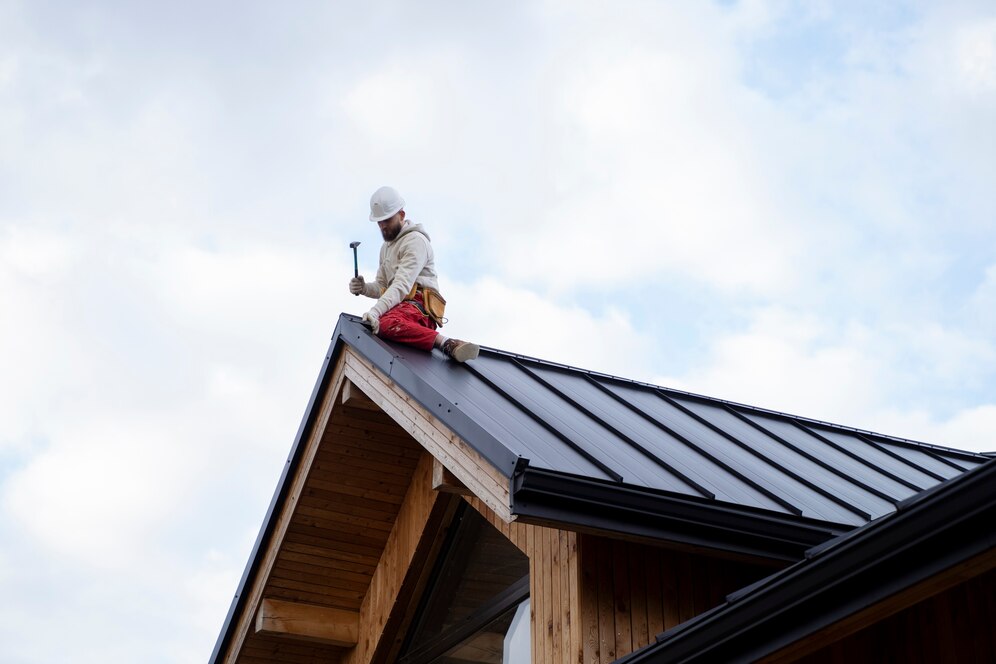There’s nothing quite like the sound of rain on a sturdy roof to make you feel secure and cozy inside your home. But have you ever stopped to think about the beating your roof takes from Mother Nature? It’s not just rain; it’s the wind, hail, and storms that can cause significant wear and tear. Before you know it, minor damages can evolve into serious, costly repairs.
That’s why in this guide, we’re going to dive deep into the world of roof maintenance, focusing on how to protect your precious abode from the most common, yet destructive weather elements: storm, wind, and hail. We’ll be exploring a variety of topics, including early signs of roof damage, preventive measures, and quick-fix solutions.
Remember, every bit of effort you put into maintaining your roof today will save you from costly repairs, or even a complete roof replacement, in the future. And we’re here to help you every step of the way. So, ready to make your home storm, wind, and hail-proof? Let’s go!
Pre-Storm Roof Inspection
A key component to protecting your home from severe weather is conducting regular inspections of your roof. During storm seasons, these assessments become even more crucial in identifying vulnerabilities and ensuring your roof is adequately prepared to withstand harsh conditions. A thorough pre-storm roof inspection should include the following steps:
1. Examine roofing materials: Check for cracked, loose, or missing shingles that may be susceptible to wind and water damage. Inspect metal roofs for signs of rust or damaged fasteners.
2. Assess flashing: Ensure that flashing around roof penetrations, such as vents and chimneys, is secured tightly and shows no signs of rust or deterioration.
3. Inspect gutters and downspouts: Confirm that gutters and downspouts are free of debris, securely fastened, and working properly to channel water away from your home.
4. Look for signs of pests or damage: Animals and insects can cause significant harm to your roofing system. Check for signs of nesting, chewed shingles, or damage to wooden components like fascia and soffits.
Storm-Resistant Roofing Materials
Having the right roofing materials in place can greatly impact your home’s ability to withstand storm, wind, and hail damage. Consider these storm-resistant roofing options:
1. Impact-Resistant Shingles: These shingles are designed to withstand the high winds and heavy rain typical of severe storms. Often made of materials such as fiberglass or a combination of asphalt and rubber, impact-resistant shingles provide added protection from wind and hail damage.
2. Metal Roofing: Metal roofs are known for their durability and ability to withstand high wind speeds. Additionally, metal roofs are fire-resistant and can effectively shed water, making them an excellent choice for storm-prone regions.
3. Tile Roofing: Clay and concrete tile roofs are not only visually appealing but also highly resistant to wind and hail damage. However, they can be more expensive and require specialized installation.
When selecting roofing materials, considering your home’s geographic location and climate is essential in determining the most suitable option for your particular needs.
Proactive Roof Maintenance
Adopting a proactive approach to roof maintenance can help prevent costly repairs and protect your home from storm, wind, and hail damage. Some practical steps you can take to maintain your roofing system include:
1. Clean gutters and downspouts: Regularly clear your gutters and downspouts of debris to prevent water buildup and overflow that could cause damage to your roof’s edge.
2. Trim overhanging trees: Overhanging branches can lead to roof damage during severe weather events. Keep trees trimmed and away from your home to reduce the risk of damage from falling limbs or debris.
3. Prevent ice dams: In colder climates, ice dams can cause water to back up beneath your shingles, leading to leaks and damage. Proper attic insulation and ventilation can help mitigate the risk of ice dam formation.
Post-Storm Inspection and Repair
After a storm has passed, it is vital to assess your roof for any damage and address issues in a timely manner to mitigate their impact. Conduct a post-storm roof inspection with these steps:
1. Carefully assess the roof’s condition: If possible, use a ladder to get a closer look at your roof, or use binoculars to inspect it from the ground. Look for signs of damage, such as missing or damaged shingles, bent or detached flashing, and debris buildup.
2. Check interior spaces: Examine your attic and interior rooms for signs of water damage, such as water stains, sagging walls or ceilings, and musty smells, which could indicate a leak.
3. Contact a roofing professional: If you notice any signs of storm damage, enlist the expertise of a roofing specialist to conduct a thorough inspection and perform necessary repairs.
Working with a qualified roofing professional ensures your home is assessed accurately and repairs are completed effectively, preparing your roof for any future severe weather events.
Simple Steps to Protect Your Roof from the Ravages of Storm, Wind, and Hail
Protecting your home from storm, wind, and hail damage requires a proactive and comprehensive approach to roof maintenance. With this information at your disposal, you’re better prepared to face whatever Mother Nature throws your way, ensuring your home remains a safe and comfortable sanctuary.
At Roof Rite AZ, our dedicated team of residential reroofing and repair specialists in Mesa, AZ, is committed to helping homeowners secure and protect their homes from storm, wind, and hail damage. Contact us today to schedule a free roofing inspection or discuss how we can assist you in maintaining a safe and durable roofing system for your home.


